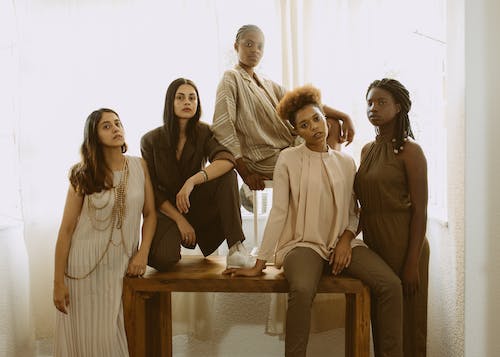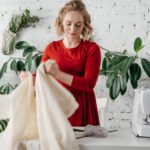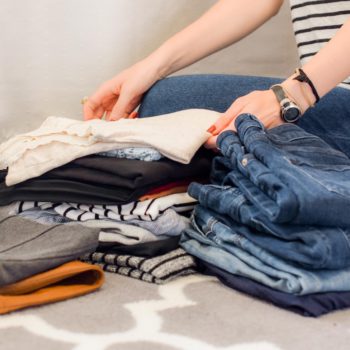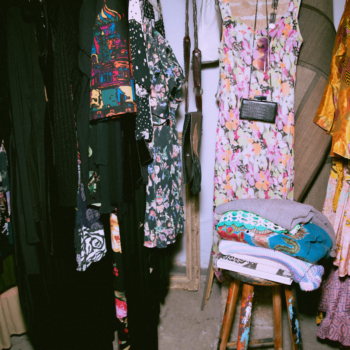|
|
As consumers become increasingly aware of the negative impact of the fashion industry on the environment and workers, a new fashion industry’s negative impact on the environment and workers a new movement known as slow fashion. In this article, we will explore the concept of slow fashion and discuss how it can help transition to a more sustainable wardrobe.
What is Slow Fashion?
Slow fashion is the antithesis to fast fashion, the prevailing model in the fashion industry. While fast fashion brands churn out new collections at an alarming rate, slow fashion promotes a more mindful and sustainable approach to fashion. Slow fashion companies prioritize quality over quantity and believe in producing garments that are meant to last.
The slow fashion movement is inspired by the slow food movement, which encourages consumers to value the quality and provenance of their food. Similarly, slow fashion emphasizes the importance of valuing and cherishing fashion items, rather than treating them as disposable.
Slow Fashion vs Fast Fashion

Slow fashion and fast fashion are two different approaches to the fashion industry. Slow fashion focuses on quality, sustainability, and ethical practices. Brands following this approach make durable, timeless clothing and often use eco-friendly materials.
This reduces the need for frequent purchases, promoting a more sustainable consumer culture. Some well-known slow fashion brands like Patagonia and Stella McCartney use recycled materials and support fair labor conditions.
On the other hand, fast fashion prioritizes speed and affordability. Brands following this model produce large quantities of inexpensive clothing inspired by the latest trends. While it offers trendy clothes at lower prices, fast fashion has a significant environmental impact.
Quick production leads to more resource use, waste, and exploitative labor practices. Brands like Zara and H&M, known for fast fashion, have faced criticism for contributing to disposable fashion and not addressing sustainability in their supply chains.
This comparison underscores the importance of informed consumer choices and the fashion industry’s need to adopt more sustainable practices.
The Environmental Impact of Fast Fashion
The fast fashion industry has a big environmental impact. One issue is cheap labor in countries where workers often face poor conditions. For example, in places like Bangladesh, many fast fashion clothes are made, but there are concerns about low wages and unsafe factories.
Another problem is the huge amount of clothes fast fashion brands produce. They make many low-quality items that quickly go out of style or wear out. This leads to lots of waste, with many clothes ending up in landfills.
Fast fashion also harms the environment through the materials it uses. Many of these items are made from synthetic fibers like polyester, which come from non-renewable resources and contribute to pollution. The industry also uses much water in processes like dyeing, which can be problematic in places with water shortages.
To tackle these problems, some people and brands are turning to more sustainable and ethical fashion choices. This includes using organic cotton and recycled fibers and adopting fair labor practices.
Organizations like Fashion Revolution are pushing for more transparency in the fashion industry, urging consumers to ask where their clothes come from. These efforts are a broader movement toward more responsible and eco-friendly fashion.
The Benefits of Slow Fashion

Slow fashion offers several benefits for both consumers and the environment. When we embrace slow fashion, we support sustainable brands prioritizing fair trade practices and transparency in their supply chain. Slow fashion brands minimize their environmental impact by choosing sustainable materials and producing garments locally.
Another benefit of slow fashion is the promotion of ethical fashion practices. Slow fashion companies often prioritize the well-being and fair treatment of workers. They ensure workers receive fair wages and work in safe and healthy conditions.
Transitioning to a Sustainable Wardrobe
- Educate Yourself About Slow Fashion Principles: Start by researching and familiarizing yourself with the core principles of slow fashion. Understand the values and practices that slow fashion brands emphasize, such as sustainability, ethical production, and durability.
- Discover Slow Fashion Brands: Explore the growing world of slow fashion brands. Many companies prioritize sustainability and ethical practices in their clothing production. For example, Patagonia is renowned for its commitment to environmental responsibility, using recycled materials and fair labor practices.
- Invest in High-Quality, Timeless Pieces: When shopping for new clothing, shift your mindset from quantity to quality. Slow fashion encourages investing in fewer, well-made garments built to last. Brands like Eileen Fisher are known for their durable and timeless designs, making them great choices for a sustainable wardrobe.
- Consider Second-Hand and Vintage: Embrace the thrifting culture to support sustainability. Second-hand and vintage shops offer unique fashion finds that reduce clothing waste and promote a circular fashion economy. Websites like thredUP and The RealReal provide online thrift shopping options.
- Participate in Clothing Swaps: Organize or participate in clothing swap events with friends or local communities. Swapping clothes allows you to refresh your wardrobe without contributing to the demand for new clothing production.
- Learn to Mend and Care for Your Clothes: Extend the life of your clothing by acquiring basic sewing and mending skills. Repairing minor damages and properly caring for your garments can significantly increase lifespan.
- Prioritize Versatility: When making new clothing purchases, opt for versatile pieces that can be mixed and matched with different outfits. This approach helps you maximize the use of each garment and reduces the need for excessive clothing.
- Support Sustainable Materials: Seek out clothing made from sustainable materials like organic cotton, Tencel, or recycled fibers. Brands like Reformation focus on incorporating eco-friendly materials into their collections.
- Evaluate Brand Transparency: Look for brands prioritizing transparency in their supply chain. Companies like Everlane are known for providing detailed information about their production processes and pricing, empowering consumers to make informed choices.
Frequently Asked Questions
Slow fashion is a movement and an approach that encourages sustainable practices and ethical choices in the fashion industry. It is the opposite of fast fashion, which focuses on producing cheap, mass-produced clothing.
Slow fashion is an approach that emphasizes sustainability, ethical production, and transparency in the fashion industry. It encourages consumers to buy fewer, better-quality items that are made to last, rather than constantly buying cheap, disposable clothing.
Slow fashion is important because it addresses the negative impacts of the fast fashion industry, such as environmental damage, exploitation of workers, and excessive waste. You can contribute to a more sustainable and ethical fashion industry by supporting slow fashion.
The principles of slow fashion include buying less and buying better, supporting sustainable brands and ethical brands, investing in high-quality pieces of clothing, embracing timeless and versatile designs, and taking care of your garments to make them last longer.
To start your slow fashion journey, you can begin by educating yourself about sustainable fashion practices and the impact of fast fashion. You can also evaluate your current wardrobe, declutter, and only keep items that align with your values. Additionally, you can start supporting slow fashion brands and shopping mindfully.
Some of the best slow fashion brands include Everlane, Patagonia, Eileen Fisher, Reformation, and People Tree. These brands prioritize sustainability, ethical production, and transparency in their practices.
AYou can shop slow fashion by supporting sustainable brands and ethical brands that prioritize transparency and ethical production. Look for brands that use sustainable materials, promote fair trade, and minimize their environmental impact.
Choosing slow-fashion items has several benefits. They are usually made with higher-quality materials, which means they last longer, and you won’t have to keep buying replacements. Slow fashion items are also often more timeless and versatile, allowing you to create a more sustainable and curated wardrobe.
Slow fashion contributes to sustainability by encouraging sustainable materials, minimizing waste, reducing carbon emissions, and supporting ethical production practices. You can help reduce the fashion industry’s environmental impact by choosing slow fashion.
To transition from fast fashion to slow fashion, you can start by gradually reducing your fast fashion purchases and investing in higher-quality, ethically made items. You can also explore second-hand and vintage shopping and learn basic clothing repair and maintenance skills.
The slow fashion movement is gaining momentum, with more and more consumers advocating for sustainable and ethical fashion practices. As the demand for slow fashion continues to grow, we will likely see an increase in the number of slow fashion retailers and sustainable brands.
Conclusion
In summary, adopting a sustainable wardrobe approach rooted in slow fashion principles signifies a conscientious choice with far-reaching implications. By prioritizing slow fashion, individuals contribute to preserving the environment by reducing their carbon footprint and minimizing the ecological toll of clothing production.
Moreover, the impact extends to the lives and well-being of fashion industry workers, as slow fashion often entails fair labor practices and ethical manufacturing.
The industry transforms as consumers increasingly gravitate toward sustainable brands that align with slow fashion values. This shift towards sustainability signals a brighter future for fashion that emphasizes longevity, quality, and responsibility.
Ultimately, the collective journey towards a more ethical and sustainable fashion landscape paves the way for a world where clothing choices reflect personal style and contribute positively to the planet and the global community.












